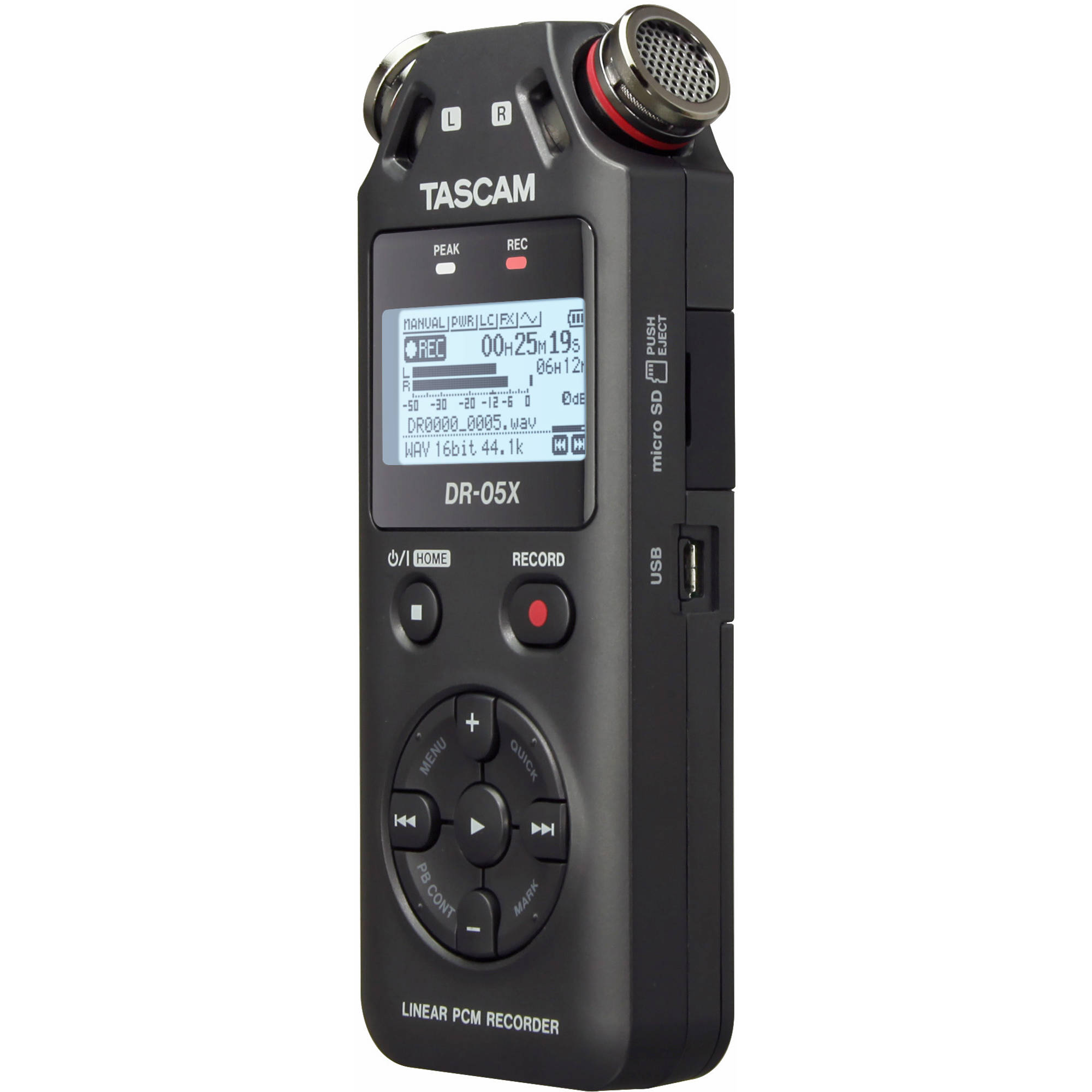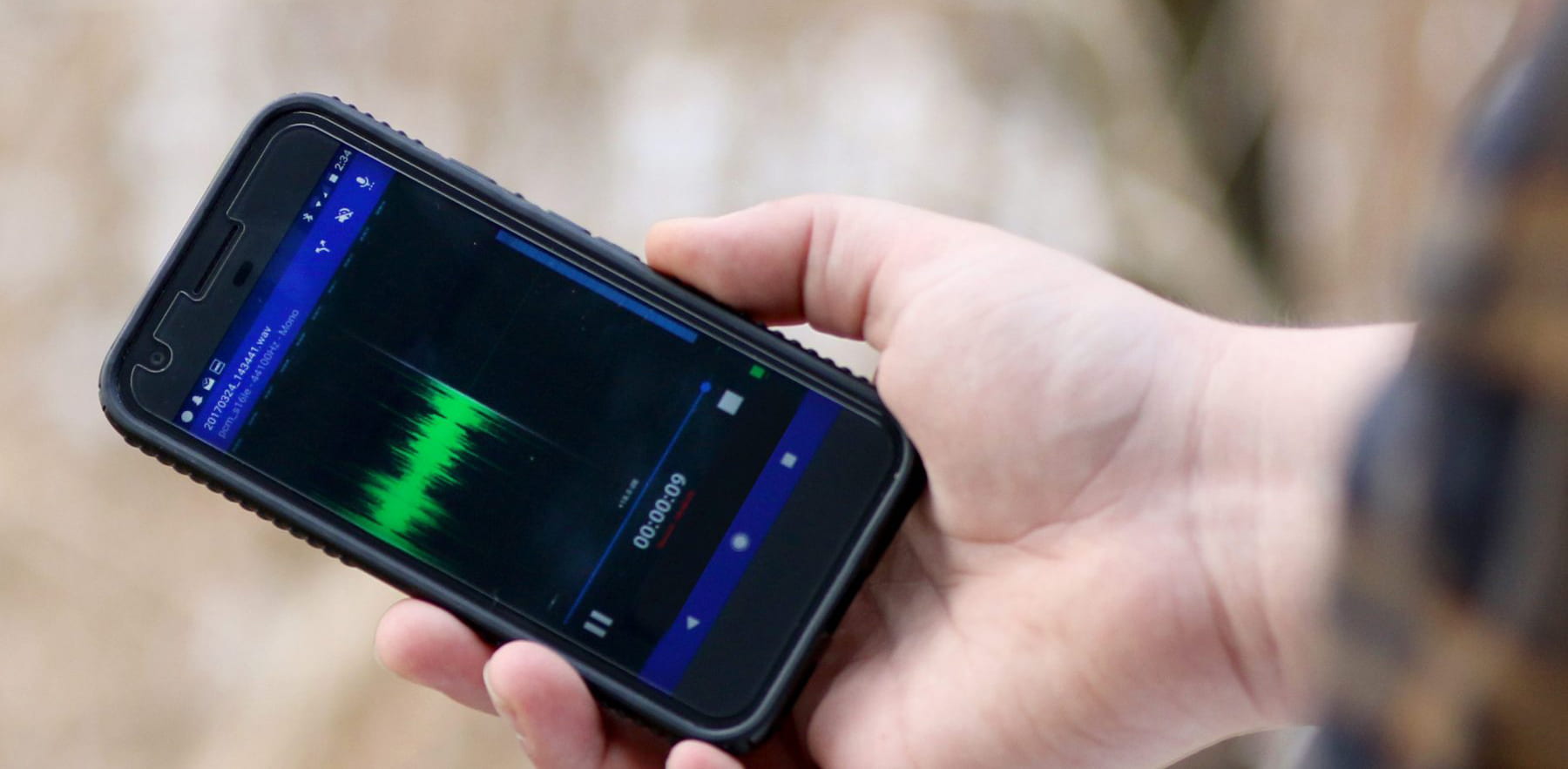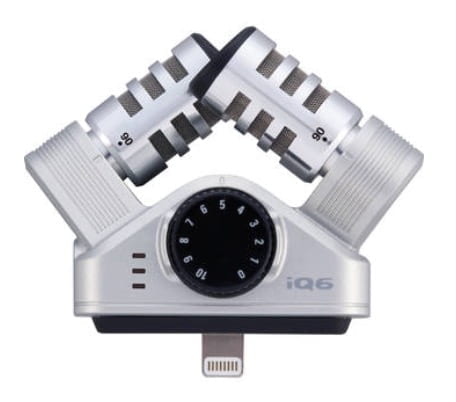Sometimes you don’t have access to a quality recording device and you want to capture something quickly. Most of us own a recorder that we have with us at all times — a smart phone.
Advantages of recording with a phone
Portability
The obvious advantage of a phone is that it is always with you.
Interface
you are familiar with the way it works, and chances are good you can get it out fast to capture a sound on the fly.
Disadvantages of recording with a phone
Quality
The phone will never be able to match the quality of a decent sound recorder (for example a zoom recorder).
Mono sound
Phones generally record in mono which means that the audio file has only one channel. When we listen to the world we hear with two ears and they pick up different details. A mono recording will lack the spatial information that gives a listener information about what’s happening on either side of you.
A mono file has only one channel. the same sound is heard through both speakers (or headphones)

A stereo file has two channels so you can have different sonic information in each speaker (or headphone).

Capture better recordings with your phone!
Your phone isn’t the greatest audio recorder, so be sure to take these steps to make your recording as good as it can be! In general there are two things to consider when making a recording with your phone:
1. Your technique
2. Your tools
Technique
There are some basic things to keep in mind when you want to get a quality recording.
Your position as a recordist
It’s easy to create a bad recording simply by being in the wrong place! How far are you from the sound that you want to record? If you are far away, the sound you want to capture might be too quiet. If you are too close to a loud sound it might be distorted.
Isolate the sound you want
If you want to capture the sound of a bird chirping, but you are close to an unwanted sound (for example a group of people talking) it will pick up both. Sometimes this kind of intrusion is hard to avoid, but try to find the best position to record the sounds you want to hear.
Wind kills recordings
Are you recording outside? Wind on microphones immediately distorts the signal. Try to record where you are protected from the wind or use a soft porous material to protect the mics from wind (more on this below!)
Recording at home
Are you planning to record your voice or other isolated sounds on your phone? Here’s a video that describes how you can create a home voice-over booth, a quiet environment to get better recordings. https://drive.google.com/file/u/0/d/1vcO4YL85daENmA6-FFYahGn9-T2TqgZl/view
Tools
What tools are you using? This includes software and hardware. I am familiar with the iphone, but many of the tips here apply to you android users too,
Locate your mics
Generally they are down at the bottom of the phone. Pointing the phone toward your subject can be important!
Recording Software
All smartphones come with some form of built in recording software. On the iphone it is Voice Memo. On an Android it is called Voice Recorder
Check your settings!
On the iphone, your recorder defaults to recording in a compressed format. That means your recordings will not sound as good as they could be! Be sure to set your recorder to “lossless”
Download some better software!
There are some very good apps that give you more flexibility with your recordings. Voice Recorder Pro (IOS) for example gives you different file recording options (for example WAV, MP3), the ability to edit your recordings, EQ to clean up your sounds, etc.
Fight the wind!
Nothing kills a recording better than the sound of wind on the microphone. Here’s an example. Professional recordists use covers for their microphones to help cut down on wind distortion. These are often referred to as “dead cats” (!!!!) because they are furry, but also as “wind jammers” or “wind muffs” The basic idea is that the soft material diffuses the wind before it ever hits the microphone.
You can make a dead cat yourself, the best material for this is fake fur, but you can experiment with other materials too: soft foam, a sponge, fuzzy thick fabric, etc.
Here’s a pretty good video, the guy is making a dead cat for a small mic, but you can just make a bigger one to cover the mics on your phone!
A better microphone
The biggest limitation is the microphone itself – it will usually only capture a mono recording, but also it’s just not the best mic!
If you can spend a little money, there are good microphones that can be plugged into a smart phone that will capture great sound. Some of them are stereo, so be sure to look for those. If the mic is described as “omnidirectional” or “unidirectional” it is not stereo!
Here are 2 mic attachments made by Zoom, The iQ7 and iQ6
A better recorder
It’s worth mentioning that these iphone mics will cost about as much as an entry level stand-alone sounds recorder. Here are a few options:

Tascam DR-05X
(about $90)

Zoom h1n
(about $110)
Checking out a recorder from the EQC at the New School
Some of you will be in the New York area this semester (Fall 2020). If so you can reserve a recording kit online from the Equipment Center and pick it up at 55 west 13th street (Arnhold Hall) on the first floor. EQC details are below.

EQC – New School Equipment Center
IMPORTANT
The EQC does not provide batteries or SD cards.
Additionally the recorders may not have any wind protectors (for example a foam wind guard or dead cat).
***Note
The Sony PCM-A10 does not require batteries (it is USB-charged) or an SD card (it has internal memory)
HOURS: Monday – Friday 10:00am – 6:00pm
Annual Contract (must fill out before making a reservation)
Reservations for equipment may be made online by 4:00 pm the day before and return times must set at least 30 minutes before the EQC closes
Contact: eqc@newschool.edu or 646-909-4557
More EQC Info: Click here
To Make a Reservation Click here
select EQC – Arnhold Hall 1st Floor
NOTE: The EQC does not provide batteries or SD cards for the recorders.




